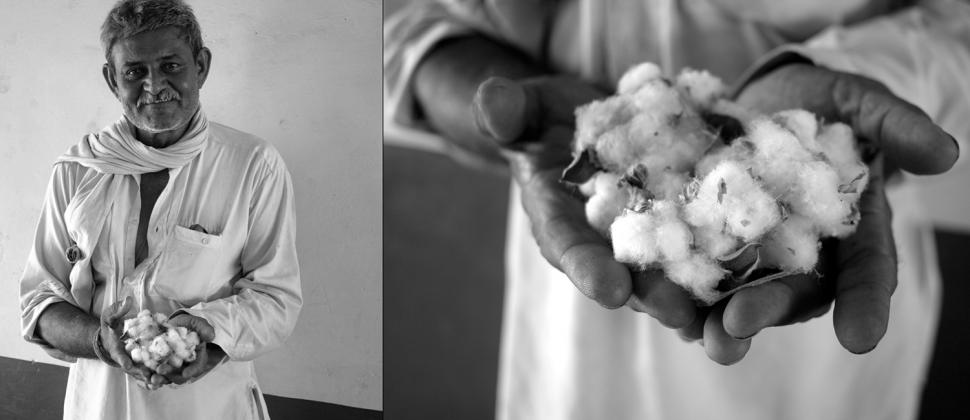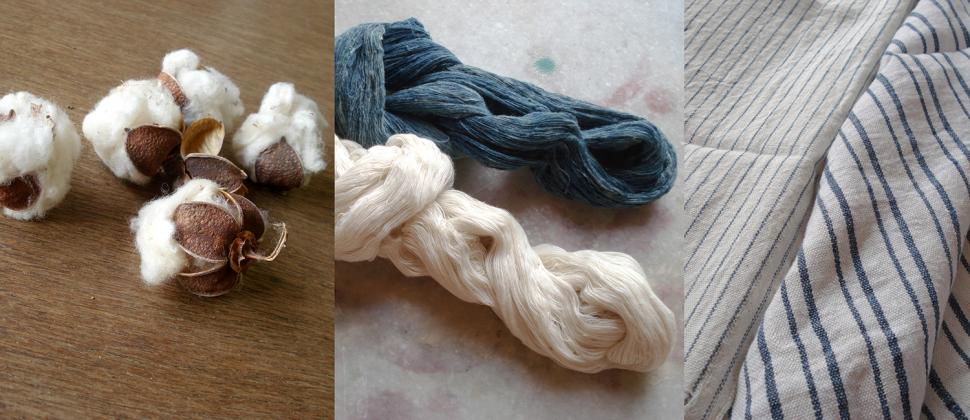Old World Cotton
From 3000 BC until the 1750’s, only the indigenous arboreum and herbaceum plants were used to grow cotton in India. Samples found from Mohen-jo-daro were made from these plants, which today are known as old world cotton. In the early market systems of Kachchh, farmers and weavers worked together to create rich, organic woven textiles with a soft but durable texture. Creating textiles from local, old world cotton is part of a vibrant national legacy of making cloth from the first to last step on Indian soil. Khamir’s Kala Cotton Initiative is a reinterpretation of an old craft value chain made for the modern marketplace.

Uncertain Times
Khamir's Kala Cotton Initiative encourages sustainable cotton textile production, and the preservation of agricultural and artisan livelihoods in Kachchh. After the 2001 earthquake, Kachchh experienced rapid industrialization. Though industry brought new prosperity, it has adversely impacted cultural livelihoods and their endurance is now shrouded in uncertainty. The number of weavers in Kachchh declined from over 2000 in the mid 1990s to only 600-700 in practice today. Small-scale weavers could not buy raw materials in bulk, and faced great difficulties in integrating with changing markets. There was a clear need to develop a local value chain in order to insulate these weavers from external market fluctuations in raw materials which come from as far away as Australia.
Rediscovering Local Cotton
Kala cotton is indigenous to Kachchh and organic, as the farmers do not use any pesticides and synthetic fertilizers. It is a purely rain fed crop that has a high tolerance for both disease and pests, and requires minimal investment. It is resilient and resurgent in the face of difficult land conditions. It forms a strong, coarse, stretchable fiber that is often used in denim. As it is difficult to produce fine quality textiles with it, as its short staple length translates to fewer twists per inch of yarn, over time its use has diminished significantly in mainstream markets.

After years of experimentation and perfecting both spinning and weaving techniques, Khamir began producing the first Kala Cotton goods in 2010. Today, the Kala Cotton Initiative encourages sustainable cotton textile production in harmony with local ecology. The project aims to create a value chain at multiple levels by working with marginalized communities and promoting locally grown species. To implement this initiative, Khamir and Satvik have created supply chain between the Kala Cotton farmers, ginners, spinners and weavers to convert the raw cotton into hand woven products Kala cotton is also now being registered as a trademark.